America In A Song: A Cultural Study Through Music
American culture has influenced the world through centuries, with impacts on the political, social, economic and cultural landscape of the world. Culturally, music has played an important role in the development and diffusion of an American identity. This article attempts to investigate notions of America through a small selection of songs with America as their subject matter, ranging from the early 19th century to present days.
This analysis is mostly based on personal interpretation and the readers have to consider it as a personal experiment, an outline that offers a subjective interpretation of the songs. Individuals have different feelings and understandings of a song, making it hard to create a precise or ‘accurate’ portrayal of America, which is not this article’s intention. Rather, this article is a small insight into how the portrayal of America through music has changed over the centuries. As time went by and socio-political climates changed, culture freed itself from certain constraints, gained freedom of speech and freedom of criticism, and reflectedthe ever-evolving American voice. It allowed music from different communities to be heard, communities that have been, and still are, silenced and oppressed (even though their influence on American music was already present, but often dismissed).
We also have to bear in mind the context in which the songs were written and the artists’ personal choices: some of them chose to actively break with the common beliefs and trends of their generation and produce a unique portrayal of America. Some decided to actively denounce political, social and racial injustices through their lyrics. This show how history has affected and continues to affect arts.
This is by no means a comprehensive study, and I apologise in advance if some songs and artists are not included in here, as the subject is too wide to cite everyone. I would strongly encourage readers to consider this article as a first step in their reflection, and continue their exploration further.
America and the Music Industry
The music industry is significant in the USA, with highly influential record companies, artists, radio stations, community orchestras, television channels (MTV) and specialized magazine (Rolling Stone). According to the IFPI Global Music Report 2016, the American music industry generated $4.898 billion in 2015 and was ranked the largest music industry in the world. The Recording Industry Association of America states that the industry grew by 11.4% in 2016 reaching around $6 billion.
Numerous eclectic genres flourished in the USA, mostly created through cultural mixes: hip-hop, blues, country, jazz, soul, rhythm and blues, pop, techno, rock… American music weaves with social and cultural identity and issues of class, race, religion, language, geography, gender and sexuality. America’s immigration has helped its music grow: Europeans came with their own music and background. Jewish and Irish immigrants brought with them their melodies and their rhythms. Native Americans left their print on American music with traditional rhythms, instruments and songs. Africans were taken to America to become slaves, and with them, they brought their musical traditions. During slavery, racial segregation, and even in contemporary America, Black communities found strength in their music and created many new music styles. The mix of genres, beats and cultures has helped the industry blossom and shaped the diversity of American music.
“My country ‘tis of thee, Sweet land of liberty, of thee I sing”
In the 19th century, American citizens took an active part in American society and wrote several patriotic songs. Proud of their newly freed country, they stood up for its values and wrote hymns that remained famous. The songs depicted America as a promise land, land of peace, dream, beauty and freedom, where everything is possible. There was a real sense of faith in the country. With the building of modern America, motivation and hope increased the positivity and patriotism of the citizens who felt they were part of something big. They wanted to show America’s greatness, and build a free and powerful nation. They believed in the American dream.
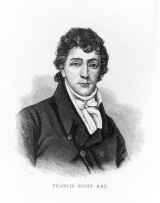
The most emblematic and patriotic American song is of course the national anthem, the “Star-Spangled Banner”, written in 1814 by Francis Scott Key, a lawyer. He was outraged by the Burning of Washington that occurred during the war between USA and the United Kingdom of Great Britain and Ireland, and the Raid on Alexandria, a British victory. Francis Scott Key saw the bombardment of Fort McHenry by the British Royal Navy and he felt the need to praise and claim America’s strength and values in a poem. He then gave the poem to his brother-in-law, who found that the lyrics matched a popular Londoner song, written by John Stafford Smith, an English composer. The finished song soon became popular, until it was later recognized as the Navy’s official song in 1889, and was established as national Anthem in 1931 by a congressional resolution signed by President Herbert Hoover. The poem translates Americans’ pride and fascination for their country described as a great and brave nation, striving for victory and freedom, with the symbol of the Star – Spangled Banner: “Oh long may it wave o’er the land of free and the home of brave”.
“My country ‘tis of thee” was written in 1831 by Samuel Francis Smith, a Baptist minister, author and journalist. He was a student at the Andover Theological Seminary in Massachusetts. The melody is recognizable as the British National Anthem “God Save the Queen”. It was the first American national anthem, before the Star-Spangled Banner. It praises America and exalts the beauty of the country: “sweet land of liberty, of thee I sing, land where my fathers died, land of the pilgrim’s pride”, “My native country, thee, Land of the noble free, Thy name I love”. A real declaration of love towards America.
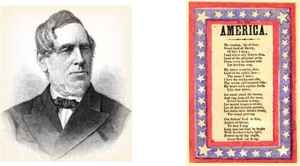
“America the Beautiful” is also a very popular patriotic song written in 1895 by songwriter Katharine Lee Bates. Its melody was composed by a church organist and choirmaster Samuel A. Ward. Bates took a trip to Colorado and Chicago to see the World’s Columbian Exposition and the White City. Looking at the wheat fields of Kansas and the Great Plains from Pikes Peak, the landscapes inspired her to write this poem. The poem was published to celebrate the 4th of July and caught the public’ attention. Ward was also inspired by America’s beauty as he took the ferryboat trip from Coney Island to New York City. The tune came to him instantly, and he was so anxious to lose it that he asked a passenger for his shirt to write the harmony on it. The music combined with the poem was published in 1910 and was known as “America the Beautiful”. There has been some attempts made to establish this song as the American national anthem, especially during John F. Kennedy’s administration, but without success. This song has been covered by several artists including Ray Charles and Elvis Presley.
“Living in America – got to have a celebration”
Let’s now concentrate on a more recent period and jump from the 1900s to the 1960s/70s. New music styles appeared during the 1920s-1940s: like gospel, blues, jazz and country music. Yet both world wars had a major impact on the music industry as people turned to old patriotic songs for comfort and motivation.
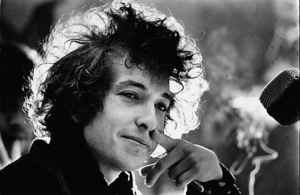
After World War 2, people were eager to enjoy life and have fun, a spirit marked by the 1960s and the exploration of new artistic and musical styles. Those years signified a wave of change and appealed to a cultural, social and political revolution. Young people wanted to have fun: they were free, independent, politically engaged and cried for change. Feminist groups started to demand a better status for woman and more consideration in day-to-day life. Hippie groups praised peace and actively protested against Vietnam War. Black people demanded rights. Young, rebellious poets traveled around the country like “rolling stones” and wrote songs about this wave of change: Bob Dylan, Joan Baez, Jim Morrison… Elvis had left his print and young people admired his charisma, his voice and his provocative attitude. Movies like Grease testify how young Americans – already in the late 50s – searched for freedom, fun and independence. They even tried new experiments like drugs. They were all part of a same dream. The Beach Boys, with their friendly song “Surfin’ USA”, attest the generation’s global feeling. Written in 1963, the band sang about enjoying life and youth by surfing and celebrating all across the US. America, with its long beach and huge waves, became the country of the surfers, with “baggies, huarache sandals, blond hair”. Listening to this song, people imagine a sunny and lighthearted America.
Artists like Frank Sinatra incarnated the light-hearted, jazzy and classy America of the early 1960s. He sang about his passion and fascination for American big cities. In 1957, Sinatra covered the song “Chicago”, written in 1922 by Fred Fisher. The lyrics are quite obvious: it is a love song from a man to his native city and America in general. America was the most powerful country in the world and people were proud of it: “I’ll show you around”, “I love it”, “this great street”. The song repeats several times “The time of your life”, as a promise of happiness, fun and freedom. Sinatra later sang about New York, which is certainly one of the most famous and stunning songs talking about USA’s greatness. First performed by Liza Minnelli in Scorses’s movie New York New York in 1977, it displayed how young people believed in the American dream. They went to big cities to get a chance to work and fulfill their dreams. They aspired to the city’s lifestyle, full of magic and celebration: “I want to be part of it”, “the city that doesn’t sleep”. “These vagabond shoes” characterized the young people coming to big cities: travelers, close to the Beat Generation, with no money, hopeful, independent and free. “I’m gonna make a brand new start” “And find I’m king of the hill, Top of the list, Head of the heap” “If I can make it here, I can make it anywhere” shows how America gave hope to its youth, fascinated, proud and full of optimism about the future of their country.
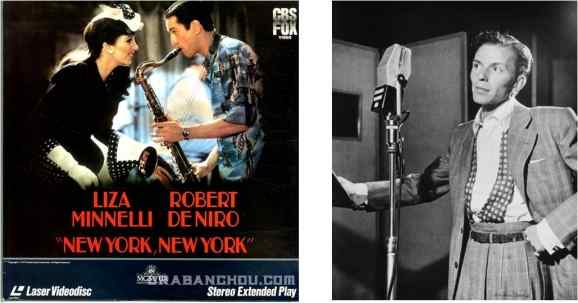
The 1970-80s were more controversial: some artists started to show their concern about USA’s engagement in the Vietnam War. Black people sang about their conditions. And some artists continued to praise America. In 1975, Elton John, English singer, released his song “Philadelphia Freedom”. Originally, this song was written in honor of Elton John’s friend Billy Jean King, a tennis player, and her team, the Philadelphia Freedoms. Bernie Taupin, who wrote the lyrics with John, assured that the lyrics did not reflect“flag-waving patriotism”; nonetheless, his words have been interpreted as a love declaration towards America, which explains its success, hitting number one in the US: “I live and breathe Philadelphia Freedom. From the day I was born I waved the flag”. “I used to be a rolling stone”, “I’d live to find an answer on the road” and “I like living easy without family ties” seem to echo the 1960s-1970s spirit, and young Americans adopted John’s words as a philosophy of life.
Neil Diamond wrote in 1981 a famous patriotic song called “America”. He delivered a positive interpretation of American immigration history and he praised USA as a welcoming, free country, where every dream comes true. It ends on the first verse of “My country ‘tis of thee”, with “Sweet land of liberty”, illustrating Diamond’s patriotism and paying tribute to America’s past. “They’re coming to America”, “Freedom’s light burning warm”: the lyrics seems to transmit hope to the people leaving their homelands to go to America.
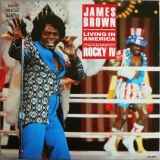
James Brown also sang about those joyful young Americans, travelling on the road to find who they are and discover US’s beauty and majesty. In “Living in America”, a groovy and electrifying tune, he conveys a stereotype view of America: long highways, coast to coast, no destination, celebration, fatback, black coffee, rock n’ roll, dinners with no sleep… It gives the impression that America is a country that never sleeps and never stops partying. “You might not be looking for the promise land but you might find it anyway”. America is depicted as pure paradise, a sacred land where life is sweet and everything is possible. Brown finishes his song with “Living in America – I feel good!” showing how proud and delighted he is to live in the USA.
“They’ve all gone to look for America”
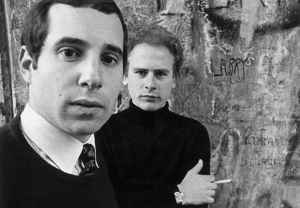
As we said before, life in the United States in the 1960s-1970s seemed sweet and cheerful, and artists wrote songs transmitting their pride to be part of America. Still, this wave of general euphoria vanished rapidly as people, especially artists, started to be disillusioned by America. The Vietnam War, long and traumatizing, brewed a sense of revolt into several artists’s work who cried their discontent and engagement for peace through their music. Also, the Civil Right Movement’s struggle generated worldwide indignation towards American policy and behavior towards the black community. Those social, racial and political issues provoked some sort of identity crisis among American artists who did not recognize their country’s values and did not believe in the American dream anymore.
In 1968, Simon and Garfunkel released their famous and beautifully profound ballad “America”. It talks about a couple taking a bus trip across the US, inspired by Paul Simon’s relationship with Kathy Chitty. It describes a journey through the country and through the poet’s mind. The song is emblematic of the late 1960s, when people sought for values of righteousness and tried to find their own place in the world. The song conveys a certain life style and attitude attributed to young Americans, those unpredictable and free-moving “rolling stones”: cigarettes, bus travelling, eating Mrs. Wagner pies… Simon depicts how those people looked for America and the American Dream -“Michigan seems like a dream to me now”- and how they soon felt disappointed, unable to reach the final destination of their quest for self-understanding. He even refers to the 1970s paranoia about governmental spying and the ever-present CIA, when people constantly felt oppressed and spied on during the Cold War. It seems like the journey is not as exciting as the couple thought it would be, and they wonder why “They’ve all come to look for America”. Their search for inner light and understanding has failed, as well as their attempt to refresh and revive their relationship, unable to communicate and share on the same level: “Kathy I’m lost, I said, though I knew she was sleeping. I’m empty and aching and I don’t know why”.
In 1973, Stevie Wonder released an incredibly powerful song about racial conflict between black and white people in America. “Living for the city”, a-7-minutes-long cry of anger and pain combined with a fast-spreading groovy rhythm, tells the story of a black family from “hard time Mississippi” condemned to live in silence and endure cruel pain in everyday life . Still, in the face of discrimination, they continue to live with the little honor they are left with. Their boy soon suffocates under society’s harshness and intolerance and ends up in prison for drug possession, as we can hear him being arrested, thrown in jail and called a “nigger” by the policemen. The lyrics talk for themselves:
“Surrounded by four walls that ain’t so pretty. His parents give him love and affection, to keep him strong, moving in the right direction. His father works some days for fourteen hours. And you can bet he barely makes a dollar. His mother goes to scrub the floor for many. And you bet believe she hardly gets a penny. His sister’s black but she is sho’ nuff pretty. Her skirt is short but Lord her legs are sturdy. To walk to school she’s got to get up early. Her clothes are old but never are they dirty. His patience’s long but soon he won’t have any To find a job is like a haystack needle Cause where he lives they don’t use colored people. He tried to vote but to him there’s no solution. I hope you hear my voice of sorrow. And that it motivates you to make a better tomorrow. This place is cruel nowhere could be much colder. If we don’t change the world will soon be over.”
In 1984, Big Black, an independent heavy metal rock group, released “The Ugly American” which transmits a violent disdain and shame of being American, far from the patriotic songs of the early 1900s. “I am an ugly American”, “I hate what I am”, “We’re so ugly”, “I hate what you are”, “I know what I am”: this extreme rejection of the American identity illustrates an uneasiness and identity crisis that has changed the conception of America, from pride and fascination to contempt and hatred. The same year, Bruce Springsteen’s powerful and critical song “Born in the USA” hit number one in many countries and left its mark on American music. Springsteen affirms his disillusion and disappointment in the face of America’s behavior towards the Vietnam War veterans. It talks about a soldier coming back home from Vietnam and the rejection he experienced in his own country, the nation he fought for. This song has been misinterpreted as a patriotic song, but in fact it is the radical contrary. Republicans took benefit of the song and used it for their political campaign, without telling Springsteen, diverting it from its true meaning. The singer declared:
“This was when the Republicans first mastered the art of co-opting anything and everything that seemed fundamentally American, and if you were on the other side, you were somehow unpatriotic. I make American music, and I write about the place I live and who I am in my lifetime. Those are the things I’m going to struggle for and fight for.”
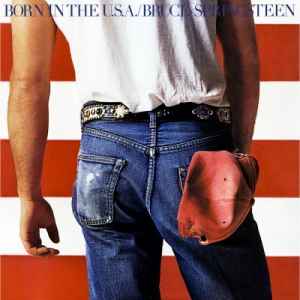
“A little piece of you, the little peace in me, will die, for this is not America”
The image of America and its values has considerably evolved throughout the decades, both for the Americans themselves and for the rest of the world. America always represented a land where everything was possible, where dreams came true. The artists always felt they succeeded when they hit the American charts. Recognition and fame came when American journalists and professionals started to talk positively about them. There always was and still is a close link between American and British music, for example. In the 1960s, the American rock n’ roll and the blues have influenced the rest of the world. Elvis Presley symbolized American success and dream, and he inspired the Beatles, for instance. For the Beatles, having a number one hit in the US was exceptional and highly esteemed: “The thing is, in America, it just seemed ridiculous — I mean, the idea of having a hit record over there, “It was just something you could never do.“Lennon later recalled. ‘They’ve got everything over there,’ Harrison said. ‘What do they want us for?’ “The music we loved did come from there so just to be there was exciting” said Paul McCartney. “This was America; this we dreamt about” recalled Ringo Starr.
https://www.youtube.com/watch?v=i0WG-ZUUOsg
However, in the 1970s, the dream looked less appealing. In 1969, at the Woodstock concert, Jimi Hendrix made a historical cover of the “Star-Spangled Banner”: in his solo guitar, he distorted the tune and the melody and added wide guitar chords to evoke the bombs that were released on Vietnam and to affirm his discontent facing America’s position in the conflict. In the 1980s-1990s, some foreign artists changed their positions towards USA radically. In 1984, David Bowie, English singer, released his song “This is not America”. It depicts the artist’s disenchantment towards America: “A little piece of you, the little peace in me, will die, for this is not America”. This song was part of the “Falcon and the Snowman” soundtrack, a movie by John Schlesinger, with Timothy Hutton and Sean Penn. The movie tells the story of a former catholic seminary student and an altar boy who turned to be a drug dealer, that both sold confidential information to USSR during the Cold War. The lyrics show disenchantment as the hopes that America had rose with the American Dream revealed to be a failure and a lie. “This is not a miracle. For this could be the biggest sky. There was a time a storm that blew so pure. So bloody red, tomorrow’s clouds, snowman melting from the inside.” We feel some sort of nostalgia and regret in the lyrics that characterize the general mood towards USA in the 1980s, with the suffocating and overlong war against USSR.
In 1997, David Bowie expressed his concern towards the phenomenon of globalization and the important influence of America on the rest of the world with his song “I’m Afraid of Americans”. “It’s not as truly hostile about Americans as say “Born in the U.S.A.”: it’s merely sardonic. I was travelling in Java when [its] first McDonald’s went up. The invasion by any homogenised culture is so depressing, the erection of another Disney World in, say, Umbria, Italy, more so. It strangles the indigenous culture and narrows expression of life.” He affirms his positions and beliefs that the world’s diversity and creativity may disappear if we continue to homogenise the planet on the American model. A music video accompanied the song: it was influenced by the movie “Taxi Driver” and it features Bowie in New York City, imagining he is being harassed by a strange and hostile American named Jonny. As he becomes more and more paranoid, he imagines he witnesses acts of violence committed by random citizens in the street – they carry invisible guns in their empty hands. In the video, Americans are depicted as frightening and violent people which develops an extreme view of USA. It still denounces the effects of television and video games on young people indoctrinated by brutal and cruel images each day. “Nobody needs anyone, They don’t even just pretend” contrasts with the idea of American brotherhood at the beginning of the 1900s in patriotic songs. Bowie offers a stereotyped view of the United States: “Jonny wants a plane, Jonny wants to suck a Coke, Jonny wants a woman, Jonny wants to think of a joke”.
Blur, an English rock group, released “Magic America” in 1994. They convey their disillusion towards the American Dream as they tell the story of a poor man who keeps on believing in this fantasy. The song is ironic and it points out how the cult around America’, the ‘promise land’ has been overtaken by a strong feeling of disenchantment and disbelief in USA: “Bill Barret has a simple dream, He calls it his plan B, Buildings in the sky and the air is sugar free, He wants to live in magic America”.
“Information age of hysteria. It’s calling out to idiot America”

Globalization puts the US at the center of the world and as the most influential country, and the American Dream spreads again into young people’s hearts. After 9/11, patriotism settled in Americans’ hearts. Barack Obama’s investiture gave hope for a more tolerant America, shared between black and white communities in cohesion. Rap music comes from the heart of the country and conveys young people’s deepest feelings about their country. Jay-Z released in October 2009 “Empire State of Mind” which is a love declaration towards New York. He makes reference to American popular culture with “McDonalds”, “Yankee”, “DeNiro” etc… and describes New York’s dynamism as a central cultural point in the world. The song delivers a balanced view of the Big Apple, depicting both its positive and negative aspects, but still with a great sense of pride:
“Concrete jungle where dreams are made of, There’s nothing you can’t do” “These streets will make you feel brand new, there lights will inspire you”, “no place in the world can compare” “I’m the new Sinatra and since I made it here, I can make it anywhere, they’re gonna love me anywhere” “Afrika Baambaataa shit home of the hip hop Yellow Cab, Gypsy Cab, Dollar Cab, holla back For foreigners that ain’t fifty they act like they forgot to act.”
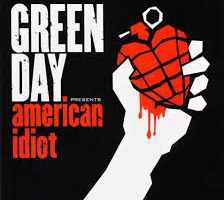
In contrast, some artists denounce and condemn America’s society to a greater extent than before and despise its capitalist values, obsessed with consumption, materialistic interest and an unstoppable need for money and possessions. Green Day wrote “American idiot” in 2004 to criticize this phenomenon. The group delivers a negative view of American society and lifestyle and calls for rebellion. They mean to challenge authority through provocation: “a nation under media”, “hysteria”, “alien nation”, “television dreams of tomorrow”, “everybody do the propaganda”, “and sing along the age of paranoia”. The band deplores the constant desire to control images with the ever presence of the media that punctuates Americans’ daily lives and imprison people into preconceived images. The lyrics suggest a disbelief in patriotism and Americanism: in the music video, we can see the American flag and its stripes melt. This song was released during Georges Bush’s campaign for re-election to protest against the government in place.
In 2003, Casting Crown, an American Christian rock band, released “American dream”. The song tells the story of Jack, a man who works desperately all his life to give his family a better future: he strongly believes in the American Dream and tries to be part of it. He works late during the weekends, praises materialistic goods – “he slips in his new BMW”- and cannot see his family often. His world collapses when he finally realizes too late that all his family desired was to spend some time with him. The band portrays how families have been destroyed because of society’s praise of the American Dream, indoctrinating people to work hard to fulfill happiness, brewing high expectations in them and destroying their family unity. It has failed people’s expectations and loneliness became part of their daily life. “His American Dream is beginning to seem like a nightmare.”
Peter Cincotti released in 2007 his love song “Philadelphia Freedom” where he associates his impossible love for a woman to his departure from Philadelphia, a city he admired but that reflects his sadness. We feel nostalgia, grief and sorrow in the melody and the lyrics due to his ending relationship as well as an aging America: “I can see America, trying not to show her age even though the winds of change keep on blowing”. He re-adapts the image of a melancholic poet and free traveler – “freedoms means a lot to me, in between the place I’ve been and where I’m going”- that was recurrent in the 1960s-1970s with Bob Dylan or Simon and Garfunkel. “When the world was young and warm, so in love and living for everything new” reveals nostalgia and disenchantment towards America, when it was “young and warm”. Still, he desperately praises Philadelphia who took his love from him- “slowly take your heart and soul until it makes nothing of you” and mixes his love for America to his passion for the person he leaves: “I hope you’ll find somebody who will love you like I do”.
Throughout the years, America has fascinated and inspired artists to write their songs to convey their personal convictions and their own engagement to build or criticize America in order to ameliorate it. American music has defined and diffused American identity and values and has helped to shape the nation both in the past and the present. This image has been praised, loved, rejected and condemned: it disappointed as well as it encouraged people to go forward and to believe in the country. Of course, these observations are general and restricted around 20 or 30 songs dealing with USA, making it difficult to elaborate an accurate and clear analysis of American image. But those artists have permitted millions of people to enjoy all kinds of music, and with their performances, they showed that music could deliver a strong message and gather people around the same cause and the same love for music. As Paul Simon said, “Music is forever; music should grow and mature with you, following you right on up until you die”.
What do you think? Leave a comment.











I’ve never read anything here before, but, seriously, thanks for writing this article.
You are more than welcome, thank you for reading it!
This is exactly what I needed, uplifting read!
Thank you, glad you liked it!
After reading this I do believe I’ll buy me a Harley-Davidson jacket and some boots, with a walkman and drive into the sunset listening to Jimi Hendrix.
Sounds like a perfect day! Thank you for reading 🙂
I enjoyed the focus on patriotism and disillusion with the American Dream. Songs seem to capture both feelings incredibly well. It makes you wonder if the American Dream is still something to strive for or if it is time to reevaluate the situation. Great analysis!
Thank you! Yes, I feel like this is still on debate and still going on. The American Dream has a certain aura and people continue to be attracted to it, even though we are aware of its failures.
This piece is proving to be a great history piece.
Thank you very much!
Awesome! I love Simon & G!
They are absolutely great and this song is one of their most powerful 🙂
That a really great collection of songs and your analysis was spot on. Really awesome. Gotta love America.
Love the article.
The section on Simon and Garfunkel is great.
This is a very good look into a history of America through the eyes of Music. You’ve crafted a rich, eclectic selection of songs that can relate to a widely diverse population.
I enjoyed this article immensely, and it came at just the right time.
Great article.
LOVING this post. It is so true.
This is such an excellent analysis! I love how you cover both sides of American nationalism in music. Because it is still very much a topic that is important to be considered: what exactly is the American dream, and what are we to strive for it? You’ve give me a lot to think about, and a playlist to start constructing. Thanks for writing! Excellent analysis
Thank you so much for this feedback, I’m glad you liked it! Yes the American Dream is still very present in society today, even internationally. I’m really interested in this whole concept and wrote a few articles that link with the theme. How Disney molded this idea through stereotyped films. How the Simpsons criticize the notion of American Dream and shows, to the extreme of course, the behavior of American families nowadays. How Miller in Death of a Salesman already denounced this idea in the 50s. If you are interested, read them, it would make me more than happy 🙂
Hi! This is a great article! I have a question: When you write about Bruce Springsteen’s Born In The USA you cite the following paragraph:
This was when the Republicans first mastered the art of co-opting anything and everything that seemed fundamentally American, and if you were on the other side, you were somehow unpatriotic. I make American music, and I write about the place I live and who I am in my lifetime. Those are the things I’m going to struggle for and fight for.”
Do you happen to have the original source for the interview this is taken from? I am currently writing an article about Springsteens influence on the modern popculture and would be happy to use this quote!
Thank you!
Matt
Hey Matt, yes this is from his 2005 interview with National Public Radio 🙂 hope it helps and good luck with your article! Thanks for reading mine
This is a great piece, but the exclusion of Woody Guthrie is definitely problematic. He was an iconic voice and his work influenced both Dylan and Springstein.
This is an awesome article, really well written and an extremely interesting topic! Awesome job!
Thank you, means a lot!
You seem like a nice person with good intentions who is seriously devoted to the cultural influence of music, but in your attempt to analyze the disillusions of the American Identity, you have become disillusioned, yourself. Contrary to some of your first comments, this is not an “uplifting read,” but in fact a condescending approach to attack those who still believe that nationality is a value and that individuals should pursue the American Identity. So thank you, for a discouraging analysis that misinforms your readers.
I think your comment is the discouraging thing here. From my point of view the author was not drawing any conclusions, just making some observations. I am a proud American but I think I’d be an ignorant one in denial if I didn’t acknowledge that we don’t live up to our ideals. I heard someone say recently that America is an idea and I can see how that is true. We are always striving to be something we will never truly be but that doesn’t make the striving pointless.
Incredibly comprehensive. Not sure this could have been done any better.
This article was awesome, thank you for writing it!
In my time abroad, I found it strange that in almost every country I went to, mainstream American music would be playing on the radio. My conversations about America with people from England, Scotland, Ireland, Germany, Switzerland, France, Poland, and the Netherlands seemed to be split almost 50/50. They either loved America or they hated it. But what was stranger… Typically, it seemed to be an unconscious mix of both. If they talked about coming to America, it was always with a wistful look in their eye and a wish to visit New York or Hollywood. Some even reminded me I should consider myself lucky to be an American. Yet they never failed to mention our deplorable gun violence, race relations, corrupt government, etc.
In the same vein, those who spoke against America, always mentioned landmarks or people they would want to see: “Oh, you’re from Tennessee! Have you seen where Elvis lived?” or “Oh, Tennessee, that’s quite far from where the stars live.”
I wonder if the music they hear has anything to do with the ambiguity of their feelings toward us? I obviously know this is a small sample size and the effects of American music on foreign conceptions of music would be something that required a lot of in depth study, but I thought it worth mentioning.
You bring up interesting points and it coincides with my experiences with Europeans as well. I never thought about the possibility of music being an influence on them in this way but it’s worth pondering and I think has merit.
Thanks for suggesting these great famous patriotic songs. I really had no idea that they all had such a great story behind them. I never thought about how songs like “Living in America” were influenced by the current events of their time. The next time I hear these classics, I’ll try to remember what it was like in America in the 60’s.
The vast contribution of Jewish immigrants needs to be added. They are an integral part of Americanization. They tell a story of who we could be as Americans, how we Americanize ourselves. These ideas became part of the American Dream. Melodies from Jewish songs were the basis of Broadway musicals. The greatest songwriter of all time. Irving Berlin, gave us White Christmas, Easter Parade, and God Bless America as well as Ziegfeld Follies. Leonard Bernstein, conductor and composer of West Side Story which portrays conflict between White ethnics and Puerto Ricans. Richard Rodgers and Oscar Hammerstein did South Pacific, a musical plea for racial tolerance. George Gershwin wrote Swanee, and Ira Gershwin built lyrics around American Slang.. He tried to bring Jazz, Ragtime, and Blues together with Yiddish. September Song was written by Kurt Weill who emigrated from Nazi Germany. Their songs and lyrics were about outsiders overcoming obstacles.
How about Funkadelic’s One Nation Under a Groove? “Here’s our chance to dance our way out of our constrictions”
Hi there!
Do you know the song, which has in a chorus something “in America”. It’s very vively and quick. Probably it’s from 60-80s. It’s kind of “Latino” music I quesss. Is the one from West Side Story is the only one of this kind? Do you know someone elfe singing something like this. It is enournous popular, but I can not thing the author… Thank you for your help.
Hi Kate, my comment is probably too late by now, but I think you may be thinking of ‘America’ from West Side Story, from Stephen Sondheim and Leonard Bernstein
I’m preparing a talk for Czechs on the American Dream and I appreciate the ideas you’ve put forth here. Thanks for a quick overview that covers a lot of interesting points in history and the song choices that help illustrate them.
A bit of context on Francis Scott Key: he opposed America going to war with the British in 1812z